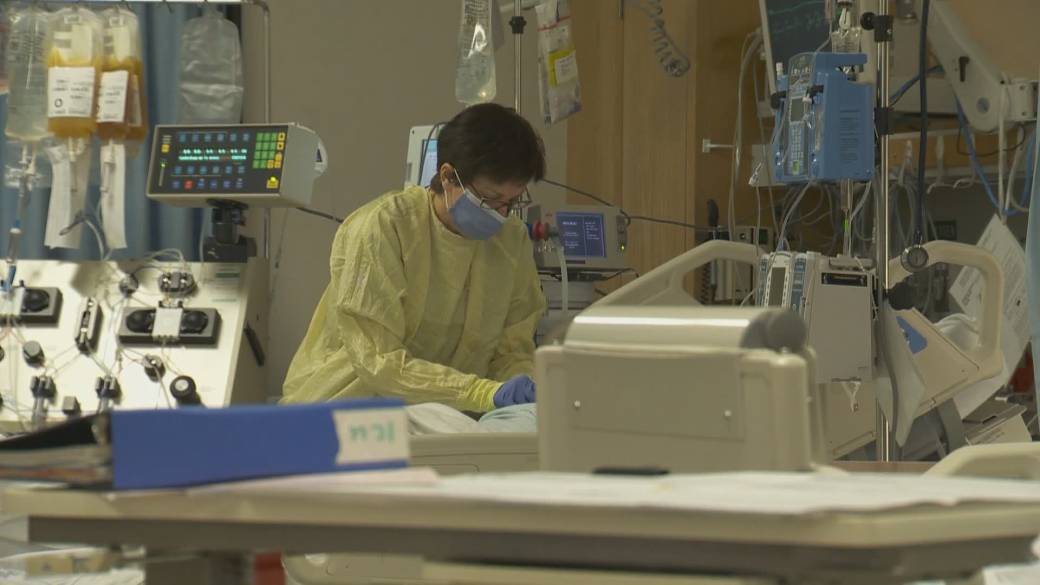Scientists at the Lawson Health Research Institute in London are studying the promising use of carbon monoxide releasing molecules in the treatment of sepsis, the potentially fatal condition in which the body overreacts to an infection, leading to a overwhelming inflammatory response.
That inflammatory response from sepsis, triggered by microbial pathogens such as a virus, bacteria, or fungus, can spread throughout the body and damage organs such as the heart, liver, lungs, or brain.
Researcher Dr. Gedas Cepinskas says that with sepsis, the immune system becomes so activated that it attacks cellular tissues, resulting in damage to the affected organs.
“Unfortunately, there is no specific therapy or treatment. The use of antibiotics, fluids, and oxygen supply just to keep the organs working is well accepted. That is why any potential new therapy to treat systemic inflammation, in general, is highly desired, ”said Cepinskas. London Live with Mike Stubbs on Tuesday.
“Carbon monoxide is not only the poisonous gas, but it has very powerful and protective anti-inflammatory cytoprotective characteristics,” in small, non-toxic concentrations, he points out.
Read more:
COVID-19: Potential Sepsis Treatment Moves to Human Trials in London, Ontario.
Carbon monoxide occurs naturally in virtually every cell in the human body, says Cepinskas, and is used as a defense mechanism: an “acute or early protective response against various signals or stresses that damage cells.”
“We evolved on this idea … and we tried to use, not inhaled carbon monoxide, but specific molecules that are called carbon monoxide releasing molecules or CORM … in the treatment of various inflammatory conditions in preclinical models,” he said.
They found success, according to a statement from Lawson, which noted a recent study published in Experimental Biology and Medicine found efficacy in the use of CORM in preclinical models to “protect individual cells in the liver and lungs from sepsis-induced inflammation.”
“We were very lucky to be one of the first to demonstrate very potent anti-inflammatory effects of (CORM) in experimental models of sepsis and even severe traumatic injuries, for example compartment syndrome,” said Cepinskas.
“All these pathologies, compartment syndrome, sepsis and even organ transplantation … have a common denominator or characteristic, which is systemic inflammation,” he added.
According to Lawson, Cepinskas is working with LHSC physicians to study the use of CORM in the treatment of limb compartment syndrome and to improve organ transplantation, and is working with the pharmaceutical industry to translate the promising therapy into clinical trials. .

According to the World Health OrganizationIn 2017, 48.9 million cases of sepsis and 11 million sepsis-related deaths were reported worldwide. Almost half of all sepsis cases that year involved children.
Diarrheal diseases and lower respiratory infections were the largest contributors to sepsis cases and sepsis-related deaths in 2017, linked to 9.2 to 15 million cases annually and 1.8 to 2.8 million cases annually, respectively, the WHO said. Almost half of all deaths were due to underlying injuries or chronic diseases.
In Canada, just over 16,300 people died of sepsis from early 2015 to late 2019, an average of about 2,728 per year, according to the most recent data from Statistics Canada.
Read more:
What you need to know about sepsis, septic shock, and stem cells
A study published late last year found that sepsis or systemic inflammation was among the most common complications associated with COVID-19, along with pneumonia, respiratory failure, and kidney failure.
“Statistics indicate that every 2.8 seconds a person dies of sepsis worldwide,” said Cepinskas.
“Sepsis is one of the most expensive diseases to treat, costing the Canadian healthcare system a billion dollars each year, and the expense is increasing, unfortunately.”

According to the Canadian Sepsis Foundation (CSF), people at risk for developing sepsis include people 75 and older; those with chronic illnesses; those who engage in drug use, especially by injection; those who use tobacco and tobacco products; and those of immunosuppressive agents such as chemotherapy.
According to CSF, delaying treatment for health conditions like appendicitis, pneumonia, or even influenza can trigger an immune response that leads to sepsis. COVID-19 and parasites like malaria can also cause sepsis.
Sepsis can also come from infections caused by invasive procedures, such as open heart surgeries, where bacteria can get directly into the bloodstream.
Symptoms can vary depending on the primary infection, but CSF says common symptoms Sepsis include an altered mental state, decreased urination, feeling extremely unwell (severe pain or discomfort), fever and / or chills, and rapid heart rate and / or rapid breathing.
Read more:
July 2020 – McMaster Research Leads Canada-Wide Research Initiative to Address Sepsis
Research on carbon monoxide releasing molecules is not the only work being done at Lawson when it comes to treating sepsis.
A potentially innovative drug with more than 20 years in the making, developed by a Lawson team led by Dr. Qingping Feng, entered clinical trials earlier this year with local COVID-19 patients with sepsis.
The trial is investigating the effectiveness of a sepsis treatment using a manufactured form of annexin A5, a human protein believed to help counteract inflammation and clotting.
Preclinical studies showed promising results in treating sepsis in animal models, and by the end of 2020, the team reported that annexin A5 could be effective in 40 percent of sepsis cases, a significant jump from treatments. current that work approximately six percent of sepsis cases. time, according to Lawson.
– With files from Jacquelyn LeBel
© 2021 Global News, a division of Corus Entertainment Inc.
Reference-globalnews.ca